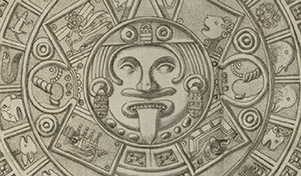Finding the Past

In 1790, workers digging in a central plaza in Mexico City unearthed several huge carved stones. Among these was the Sun Stone, which was displayed with another find, a standing image of Coatlicue, the mother of the gods. Antonio León y Gamas’s publication provided the first study of the Sun Stone and the Coatlicue statue, both of which became symbols of growing Mexican nationalism.
In 1790, workers digging in a central plaza in Mexico City unearthed several huge carved stones. Among these was the Sun Stone, which was displayed with another find, a standing image of Coatlicue, the mother of the gods. Antonio León y Gamas’s publication provided the first study of the Sun Stone and the Coatlicue statue, both of which became symbols of growing Mexican nationalism.